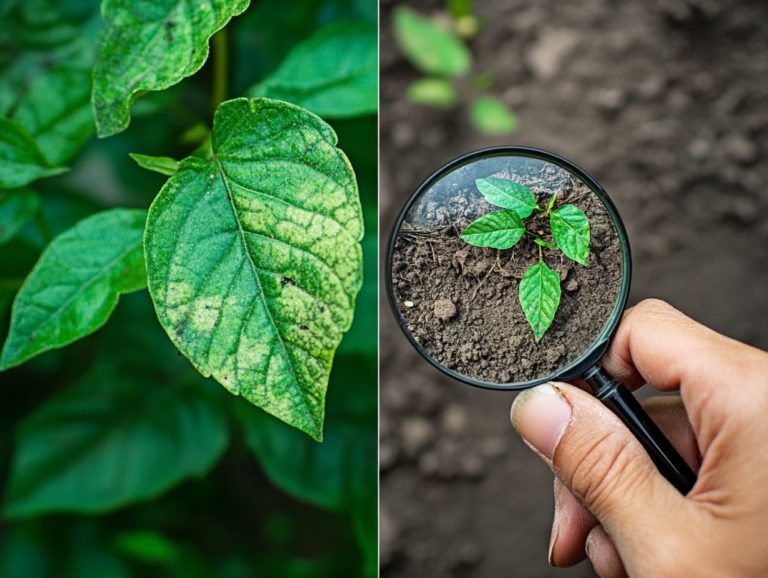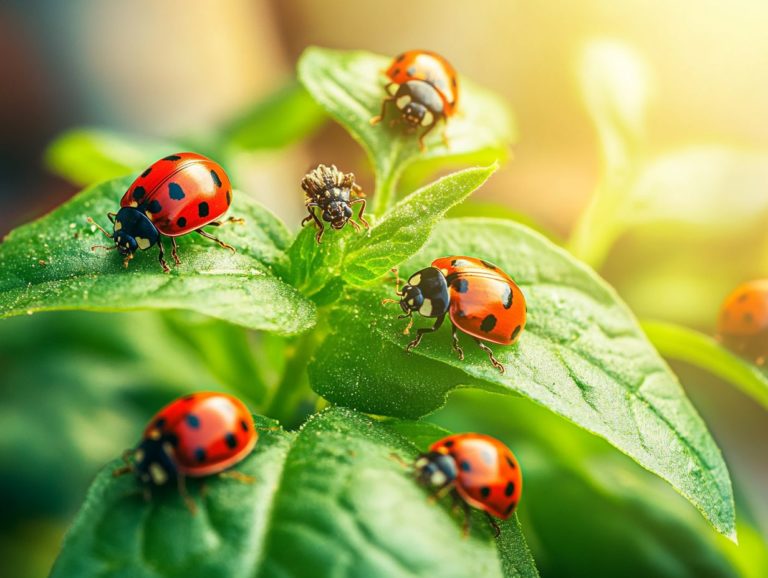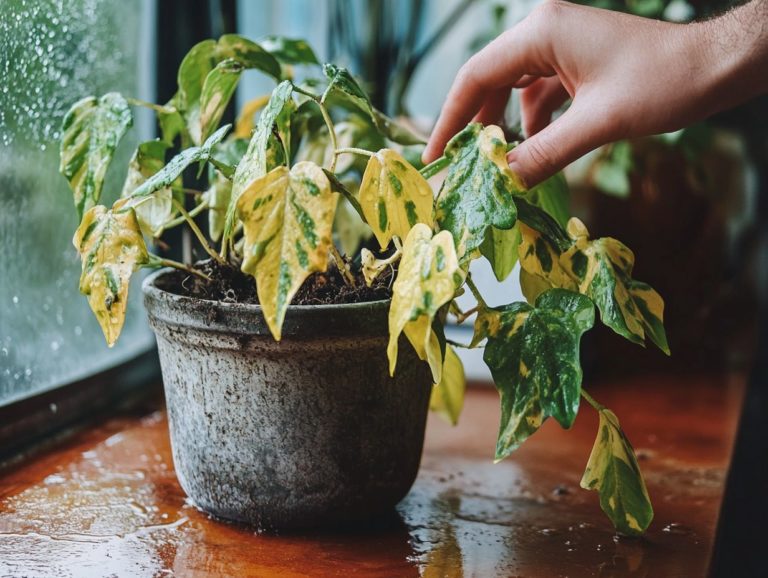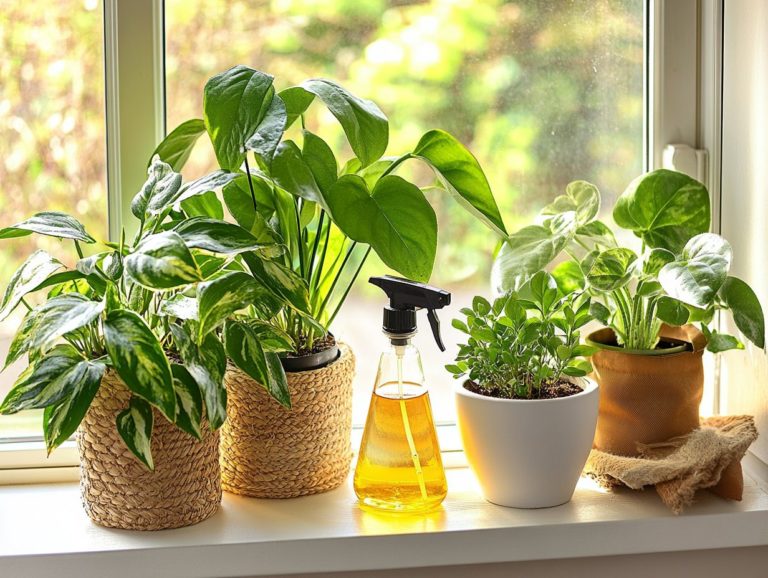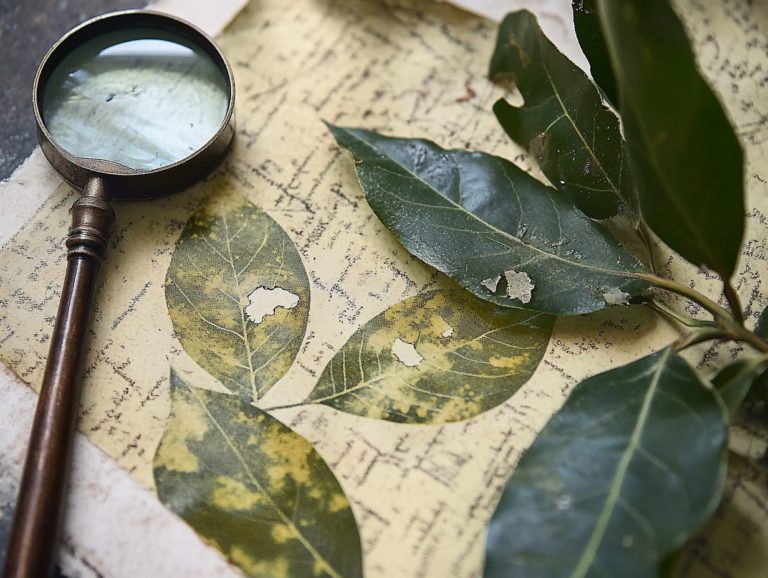Tips for Dealing with Indoor Plant Flies
Indoor plant flies can truly disrupt the tranquility of your green sanctuary. Let s reclaim your green sanctuary from those pesky flies! These nuisances transform it into an unwelcome breeding ground for pests.
To effectively prevent and treat these nuisances, it s crucial to understand the various types of flies and their favored habitats. This guide will empower you to identify and eliminate infestations, explore natural remedies that keep your plants healthy and free from flies, and offer long-term maintenance tips to ensure your indoor garden remains a flourishing retreat from these unwelcome intruders.
Contents
- Key Takeaways:
- Understanding Indoor Plant Flies
- Prevention Techniques
- Identifying and Eliminating Infestations
- Natural Remedies for Indoor Plant Flies
- Long-Term Maintenance Tips
- Preventing Future Infestations
- Frequently Asked Questions
- What are some natural ways to get rid of indoor plant flies?
- How can I prevent indoor plant flies from infesting my plants?
- Are indoor plant flies harmful to my plants?
- Can indoor plant flies be controlled without the use of chemicals?
- How do I know if my plants have an indoor plant fly infestation?
- Are there any preventive measures I can take to avoid indoor plant fly infestations?
Key Takeaways:
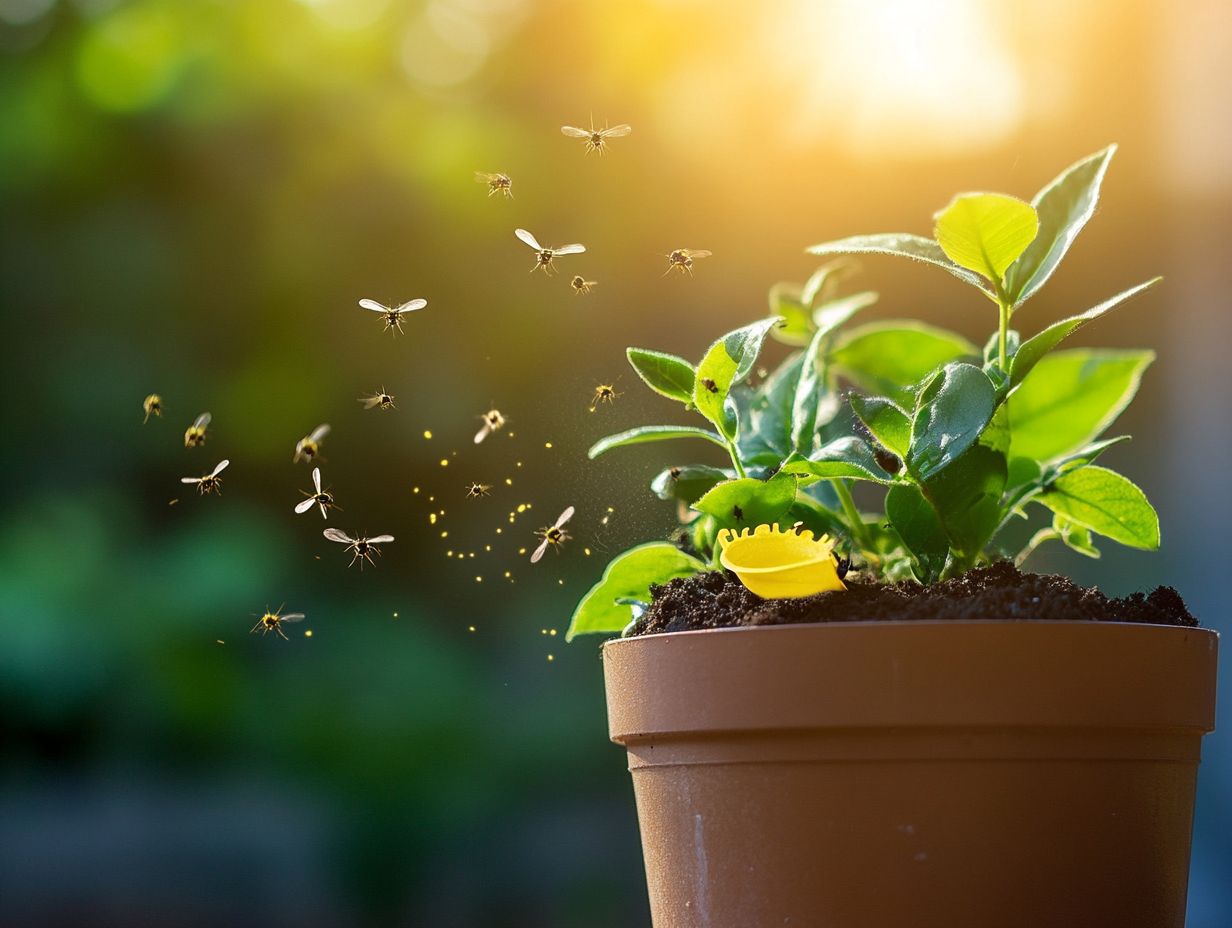
- Regularly inspect indoor plants for signs of flies and their habitats to prevent infestations.
- Use natural and non-toxic methods to eliminate indoor plant flies, such as using vinegar traps or introducing predatory insects.
- Maintain a clean and well-ventilated environment for indoor plants to prevent future infestations.
Understanding Indoor Plant Flies
Understanding indoor plant flies is essential for anyone who cherishes houseplants. These pests can wreak havoc on your cherished greenery.
Fungus gnats, often lurking in moist soil, thrive on organic material. They can invade the plant roots of your plants, resulting in unhealthy specimens and stunted growth.
These adult gnats are more than just an annoyance; they can signal deeper issues in your plant care routine. Use effective ways to manage pests to prevent infestations and foster a thriving environment for your plants.
Types of Flies and Their Habitats
There are several types of flies that can affect your houseplants, with fungus gnats being the most persistent pest you might encounter as an indoor gardener. These tiny, often black flies thrive in moist, organic-rich soil, making potted plants their prime real estate.
While you may notice the adult gnats fluttering about, their larvae are hidden in the soil, feeding on decomposing matter. This can potentially disrupt healthy root systems.
Understanding their behavior is essential. For instance, the adults actively seek out damp areas for breeding, while the larvae can threaten seedlings and young plants. Familiarizing yourself with their lifecycle allows you to create an inhospitable environment for these pests, ensuring your indoor space remains vibrant and flourishing.
Prevention Techniques
Effective prevention techniques are vital for maintaining the health of your houseplants while keeping those pesky indoor plant flies at bay. By prioritizing proper soil drainage and implementing strategic pest management practices, you can cultivate an environment that discourages the growth of fungus gnats and other troublesome pests.
Utilizing targeted prevention methods, such as incorporating neem oil a natural pesticide derived from the seeds of the neem tree or mosquito dunks, prevents adult gnats from infesting your plants. This also fosters a more robust and flourishing indoor garden.
Keeping Flies Away from Indoor Plants
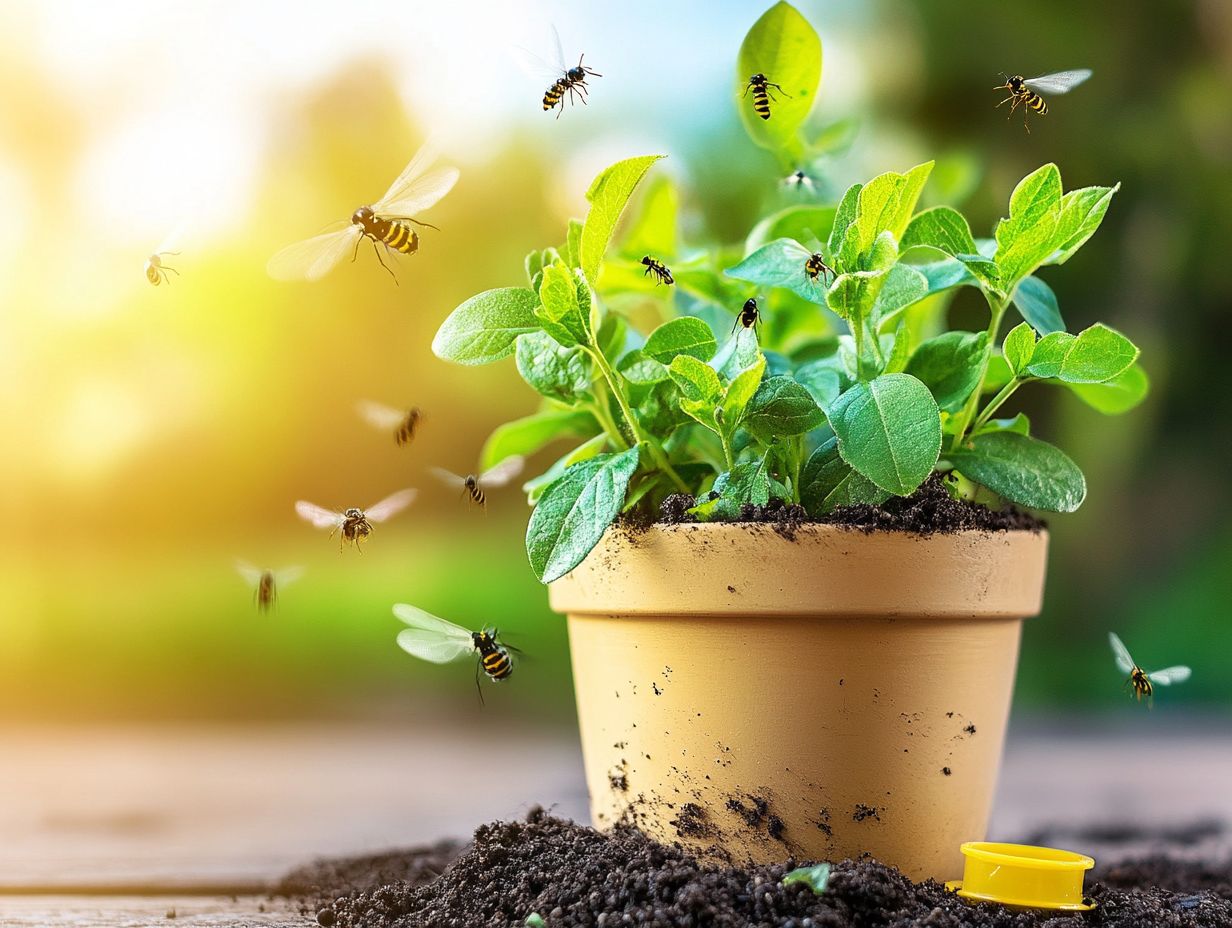
Keeping flies away from your indoor plants is essential for maintaining their health and enhancing the aesthetic appeal of your living space, particularly when it comes to those pesky fungus gnats. These unwelcome intruders can sap the vitality of your plants and create an unpleasant atmosphere.
The exciting part is you can employ various proactive techniques to effectively keep them at bay.
- Sticky traps are a game-changer, effortlessly capturing unsuspecting flies while blending seamlessly with your décor.
- A simple concoction of apple cider vinegar can serve as an enticing lure, drawing in gnats while ensuring your plants remain unharmed. It’s a key part of effective pest control tips.
- Introducing natural predators, such as beneficial nematodes or predatory insects, can help keep those gnat populations under control.
By embracing these organic methods, you can cultivate a balanced ecosystem that fosters thriving plants without the nuisance of flies. Try these tips today and watch your indoor garden flourish!
Identifying and Eliminating Infestations
Spotting and getting rid of gnat infestations is key to keeping your houseplants thriving and full of life! You ll want to be vigilant for signs of infestation look for those pesky larvae in moist soil or adult gnats flitting around your plants. Recognizing these indicators is your first step in effective pest management.
By implementing timely solutions, you not only tackle the immediate problem but also establish a proactive framework for future prevention strategies. This ensures that your houseplants remain protected and thrive beautifully.
Signs of Infestation and Effective Solutions
The signs of a gnat infestation can manifest in various ways. Most commonly, you’ll notice adult gnats hovering around your plants and larvae lurking in the soil.
These tiny intruders often appear in kitchens and near houseplants, thriving in moist environments. Keep an eye out for dark specks of larvae within the soil or around drainage holes, as these can indicate a potential breeding ground.
To effectively combat these pests, consider employing a range of pest management techniques that include:
- Hydrogen peroxide
Hydrogen peroxide can serve as a potent solution, effectively eliminating larvae when mixed with water and applied to the affected soil. Neem oil, a natural pesticide, disrupts the life cycle of these nuisances, making it an excellent choice for both prevention and treatment.
Letting the top layer of soil dry out regularly and ensuring good drainage can stop further infestations, creating an inhospitable environment for gnats to thrive.
Natural Remedies for Indoor Plant Flies
Natural remedies for indoor plant flies offer you eco-friendly, non-toxic solutions to tackle pests like fungus gnats without jeopardizing your beloved houseplants.
By utilizing ingredients such as apple cider vinegar, mosquito dunks, and neem oil, you can effectively diminish gnat populations. This helps maintain a safe environment for your plants. Consider also using BTI for a holistic approach.
Adopting these methods not only addresses existing infestations but also elevates your overall pest management strategy. This ensures lasting results for your indoor garden.
Non-Toxic Methods for Removing Flies
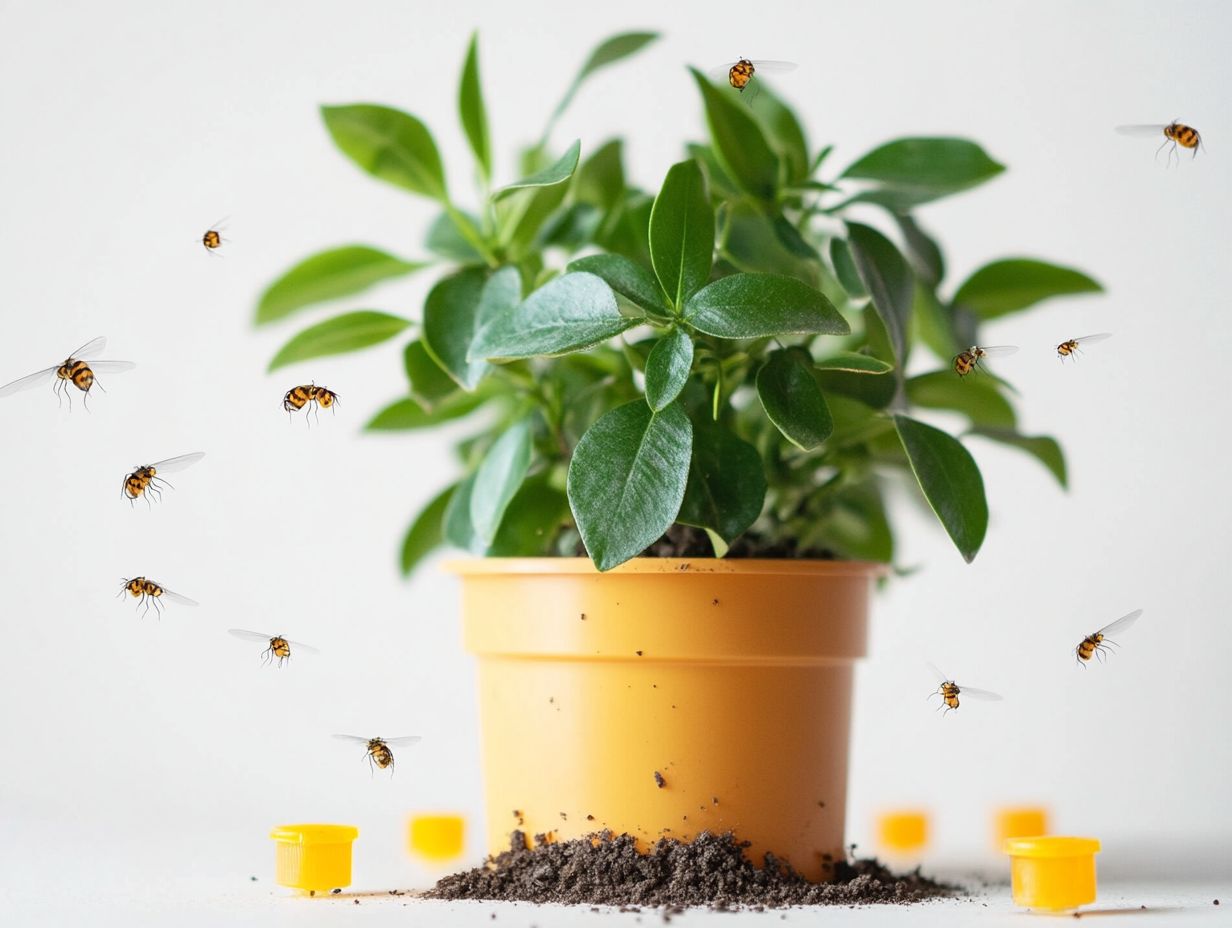
Using non-toxic methods to remove flies keeps your indoor garden healthy. It avoids the use of harsh chemicals.
By embracing these gentle yet effective strategies, you not only protect your beloved plants but also contribute to a safer environment for your pets and family. One particularly effective tactic involves using hydrogen peroxide dilute it and apply it to the soil to target larvae, preventing them from maturing into adult pests. Utilizing natural repellents like essential oils or introducing beneficial insects can further enhance your pest control efforts.
Start using these remedies today to keep your indoor garden healthy and thriving, even as you consider advice from experts like MarthaStewart.com. For more detailed strategies, check out using traps to manage indoor plant pests.
Long-Term Maintenance Tips
Long-term maintenance tips are essential for preserving the health and vitality of your houseplants while deftly managing pests such as fungus gnats. By adopting consistent pest management practices and proactive prevention methods, you can cultivate a resilient indoor garden that flourishes despite the challenges posed by pesky indoor plant flies.
Regular monitoring, coupled with the use of organic materials like neem oil, will not only fend off pests but also elevate the overall growth and aesthetic appeal of your beloved houseplants.
Preventing Future Infestations
Preventing future infestations of fungus gnats and other pesky indoor plant flies depends on your commitment to effective pest management and proper houseplant care.
To cultivate a thriving environment for your plants, it’s essential to optimize soil drainage. This means ensuring water can flow through the soil easily, minimizing moisture retention that can attract these unwelcome pests.
You ll also want to adopt appropriate watering techniques. Overwatering creates an ideal breeding ground for gnats. Incorporating organic materials like compost enhances soil health and naturally deters pests.
By taking these proactive steps, you can significantly reduce the risk of infestations. This ensures your indoor garden flourishes without the annoyance of unwanted insects.
Frequently Asked Questions
What are some natural ways to get rid of indoor plant flies?
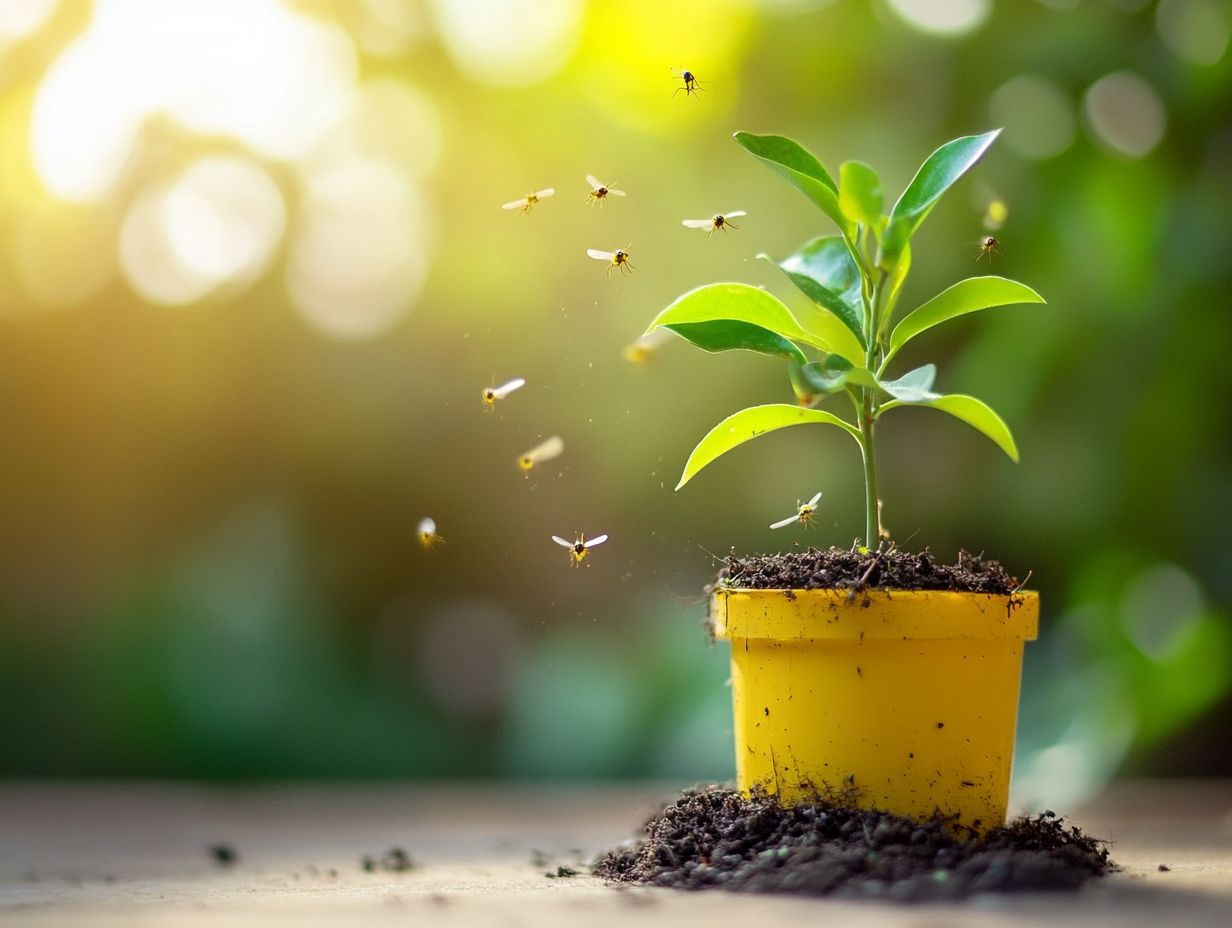
Some natural ways to get rid of indoor plant flies include using sticky fly traps, creating apple cider vinegar traps, and introducing carnivorous plants such as sundews or pitcher plants.
How can I prevent indoor plant flies from infesting my plants?
To prevent indoor plant flies, regularly check your plants for signs of infestation. Avoid over-watering your plants and keep your indoor space clean.
Are indoor plant flies harmful to my plants?
Indoor plant flies don’t feed on plants, but their larvae can damage roots and hinder growth. It’s best to remove them to protect your plants health.
Can indoor plant flies be controlled without the use of chemicals?
Yes! Many natural and chemical-free methods exist to control indoor plant flies. These include using fly traps, changing the soil, and regularly maintaining your plants and their surroundings.
How do I know if my plants have an indoor plant fly infestation?
Signs of an indoor plant fly infestation include small black flies around your plants, larvae in the soil, and wilting or dying plants. Take action now to protect your plants from these invaders!
Are there any preventive measures I can take to avoid indoor plant fly infestations?
Yes, you can take preventive measures like using sterilized potting soil, avoiding over-watering, and regularly cleaning and inspecting your plants. Check new plants for pests before bringing them home.

